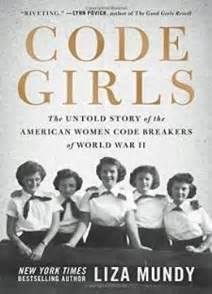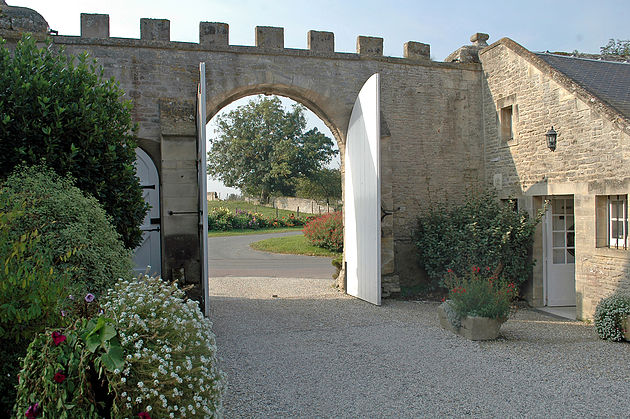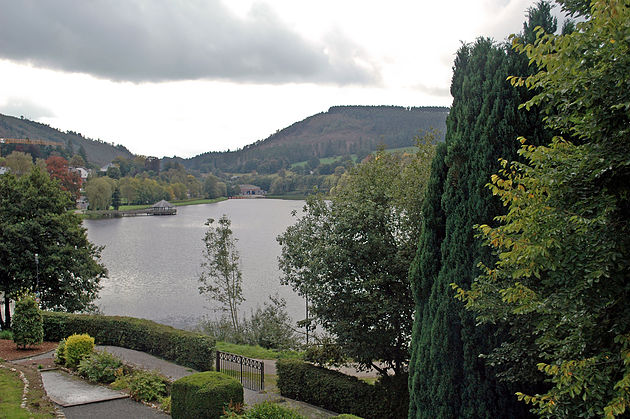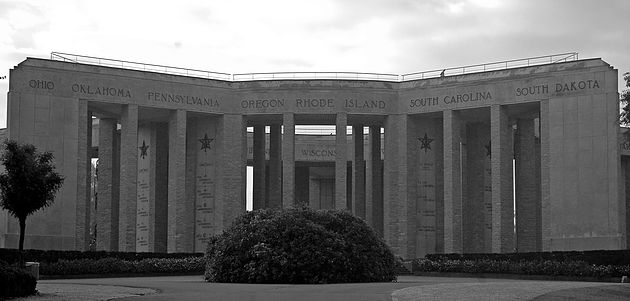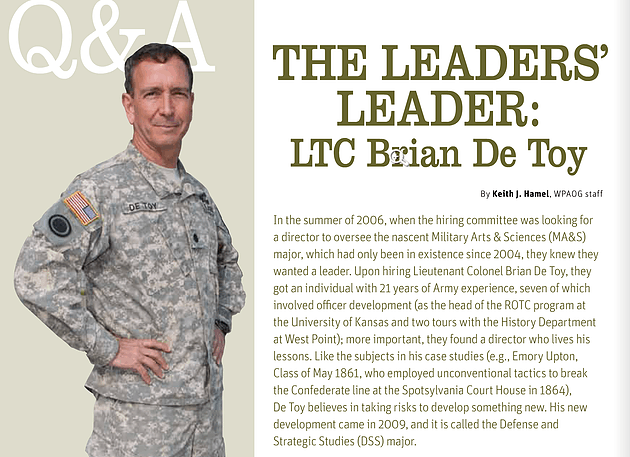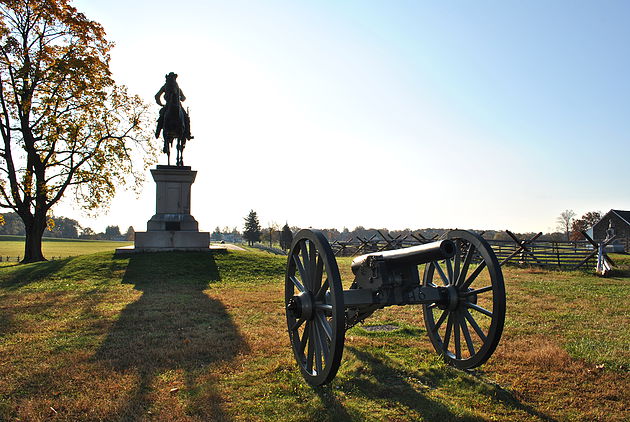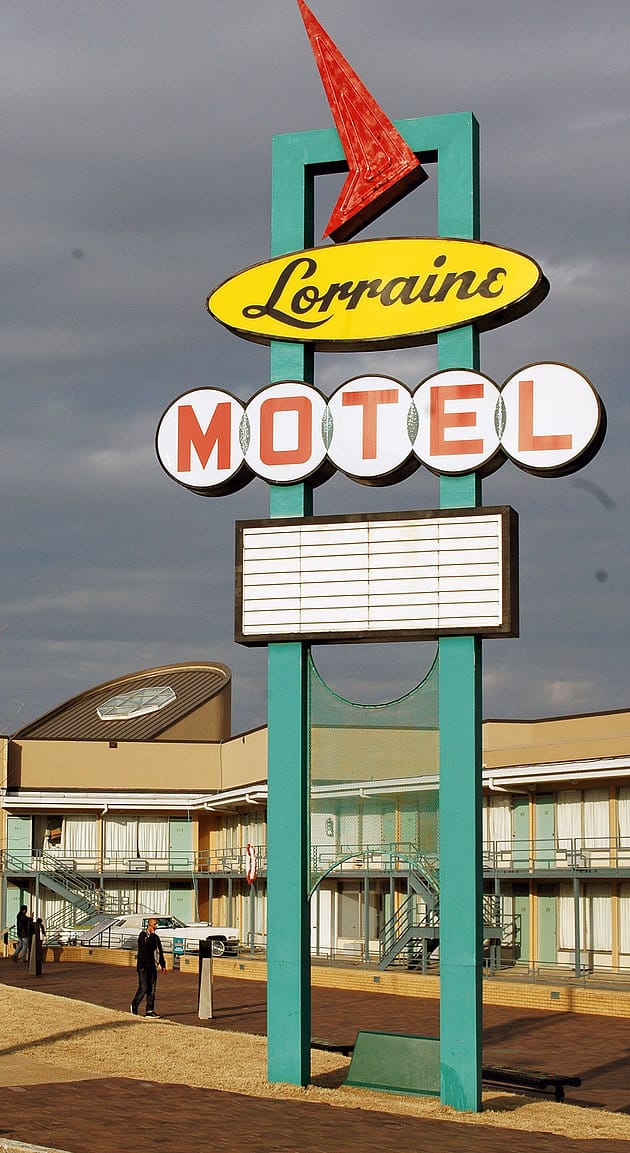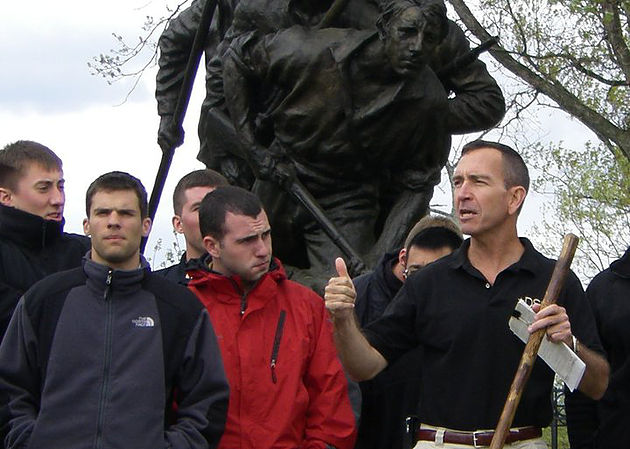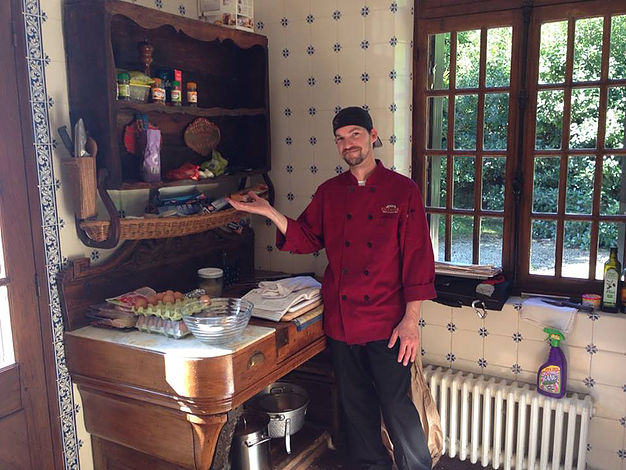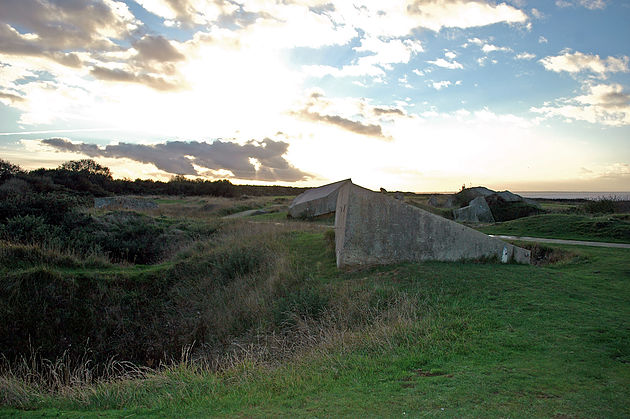In February 2014, Brian and I took a journey through the South to discover the emergence of the Civil Rights era 50 years ago in the United States. Following is an article we wrote regarding that memorable trip.
Mississippi 50 Years On – A Journey Through The Soul of the South
Nineteen sixty-four was a watershed year in the American civil rights movement. Fifty years on we decided to take a journey through the soul of the South, to see and experience the region where much of that bloody freedom fight took place. Our week-long trip would take us from cosmopolitan New Orleans, through the great length of Mississippi, to Memphis, considered by some “the most southern city on earth.” We had recently seen Bryan Cranston’s masterful performance as LBJ in that fateful year, in Broadway’s “All the Way,” and knew the high-stakes involved with the Civil Rights and Voting Rights acts hanging in the balance. And, simultaneously, a tortured Mississippi burned. We were intrigued to see how the South, and the nation, faced its past.
We landed at New Orleans’ appropriately named Louis Armstrong International Airport on a bright, sunny mid-February afternoon. Appropriately, because, more than anything else, the Big Easy oozes music in all varieties but none is more dynamically expressive of the city than Jazz, and Satchmo Armstrong is its human embodiment. Our 48 hours in Nawluns (as the locals drawl) saw us explore museums and music – some old friends, some new acquaintances.
At Preservation Hall, on Saint Peter’s in the French Quarter, we attended the third and final extended set of the evening. The venue, as the name suggests, seeks to preserve original New Orleans jazz amidst the genre’s constant metamorphosis. The small audience, about 50 attend each set, were treated to a rip-roaring, authentic jazz session with artists ranging from their 20s to 70s. The Preservation Hall Stars did not disappoint and received raucous applause from the nearly all-white audience. Even though the venue is small, the small uptick in price for the front row seats was well worth it. The following evening, we made our way east of the Quarter into Faubourg Marigny, to hear the Royal Roses led by Aurora Nealand in The Maison on Frenchmen Street. This quintet played an excellent jazz infused with modern sensibility and compared well with the band at Preservation Hall; different styles equally enjoyable. The supremely talented elfin leader of the band, Ms. Nealand, on sax and clarinet and vocals, showed the range of women in jazz along with Mari Watanabe’s piano of the previous night, when the latter riffed off an excellent Scott Joplin ragtime piece. In sum, we were treated to both the preservation and continuation of jazz. While moving forward, New Orleans remains true to her roots. One can hear all kinds of music, much of it quite bad on Bourbon Street in the French Quarter. However, the reason many of us come to New Orleans is for its jazz, and the current epicenter is Frenchmen Street between Washington Square and the Esplanade. We left impressed.
On our second day, enjoying a superb New South lunch at Tivoli & Lee at Lee Circle, we observed approximately 15 African-American girls in school uniform eating their lunch under the shadows of General Robert E. Lee on a high column. We were struck by the incongruity of the laughing teenagers and, considering the history he represents, the old Virginian looking down upon them. After our meal, we headed towards Stephen Ambrose’s masterpiece, the National World War Two Museum. En route, we made a slight detour to the nearby Confederate Memorial Hall. Billing itself as the oldest museum in the City, it appears nothing has transpired since its collection and story were embalmed together in the 1890s. It is truly an ossified relic, in which we felt entombed. Its failure to place the conflict in any kind of context is sad, (for example, chattel slavery is barely mentioned as a cause of war or in any other meaningful way), yet not too worrisome as it appears no one visits anymore. Wearily reprehensible is what I thought of itd since its desiccated collection and story were embalmed together in the 1890s. It is truly an ossified relic. One feels entombed inside. Its failure to place the conflict in any kind of context is sad, yet not too worrisome as it appears no one visits anymore. Wearily reprehensible is epithetically justified.
Directly across the street is the monumental National World War II Museum. Inspired by the vision of historian Stephen Ambrose, the last I visited in 2003, this was the recently opened and superb National D-Day Museum. It has since quadrupled in size and yet its scope and scale remain true to the high quality of the original foundation. The breadth of exhibits and collections are truly awe-inspiring in their three-dimensional and hands-on experience brings the Greatest Generation as close as ever.
The National World War Two Museum, in contrast, is one of the finest military institutions in the country. Its interpretations do not shy from any controversy, including, in the vein that we were following on this trip, the abysmal treatment of Japanese-Americans and African-Americans during the war. Ambrose, a long-time professor at the University of New Orleans and one of the foremost American historians of the war, ensured the museum’s location would pay tribute to the critical role played by the Higgins’ Boats, the ubiquitous landing craft of WWII, and brain-child of New Orleans’s own Andrew Jackson Higgins.
Along the Mississippi Riverfront, we were struck by the contrasting statues of Winston Churchill and Bernardo de Galves. Churchill, the Anglo-American, is well-known to all. And his statue, with his hand raised in his famed “V for Victory” sign, is eminently placed nearby to the highly-trafficked Harrod’s Casino. Not far away, but in the shadows, is the oxidized and rusting “tribute” to de Galves, who, arguably, is much more important to the success of this experiment we call America than Churchill. De Galves’ absolutely critical role in our victory in the American Revolution is all but lost to current generations of Americans. Galveston, Texas, and St Bernard Parish, Louisiana, bear his name but few know his deeds.
All too quickly our time in the Crescent City was at an end. We said our farewells with plans to visit again soon. Renting a car on Canal Street and heading north out of New Orleans, we passed the hulking, shiny Mercedes Benz New Orleans Superdome. This edifice, scene of both the depths of Katrina deprivation and Saints’ NFL success, brought to mind an earlier football controversy. One that illustrates the tense nature of the racial construct in the South of 1964. Following that Freedom Riders’ summer, the American Football League awarded its All-Star Game to New Orleans, to be played in Tulane Stadium. However, the hotel laws of the day forbade whites and blacks staying in the same accommodation. This did not sit well with the players of the ‘60s, who threatened boycott. The owners demurred and wisely moved the contest to the more hospitable city of Houston.
Taking I-10 northwest out of the city, we then caught I-55 and drove along the west side of massive Lake Pontchartrain. For many miles, we drove on an elevated highway just above the swampy bayou. Crossing the Mississippi state line at sunset, we soon turned off on US 98 and headed west toward our destination of the evening, Natchez on the bluffs of the Mississippi River. The two-lane highway merged into US 84 at the town of Bude. For the next 20 miles, we drove through the beautifully rugged Homochitto National Forest. In contrast to what we expected of the geography in southwest Mississippi, the road was unexpectedly undulating. Soon, however, we broke free from the forest and, in the gloaming, entered the environs of Natchez, one of the most historic small towns in America.
After a quick dinner on the riverfront Jim Bowie restaurant, where our young server had difficulty understanding us (because of our lack of a Southern drawl?), we settled in at the Natchez Grand Hotel. In the morning, Brian walked up Franklin into the historic downtown and procured coffee and chai at the Natchez Coffee Company. He was delighted by Sharon Brown’s coffee emporium, as fine as any in the country. Well-caffeinated for the day, we walked the river bluffs for which Natchez is famed and read the numerous plaques describing the history of the town. One honored the city’s own Richard Wright, famed author of “Black Boy” and “Native Son.” Another paid tribute to the victims of the 1940 “Rhythm Club Fire” in which 209 African-American citizens died in the flames of the segregated dance club. This tragedy ranks among the worst fires in US history.
Boasting more than 500 pre-Civil War structures, Natchez remains a quintessentially Southern town that captures the zeitgeist of the antebellum days. For the four decades leading up to the Civil War, more wealth was concentrated in Natchez than any other southern town in the US. Make no doubt, this wealth was built on the backs of the African-American slaves who toiled by the tens of thousands on the plantations lining both sides of the Mississippi. For, remarkably, this small town became the largest slave trading emporium in inland America, second only to that of Alexandria, Virginia. The United States’ withdrawal from the international slave trade in 1808 led to the vast increase in the internal slave market and Natchez became its epicenter. Many of those 500 antebellum structures are directly tied to that empire built on slavery, so we decided to visit a Greek-styled mansion, Stanton Hall, queen jewel of the monied Natchez society.
Built in 1857 for cotton magnate Fredrick Stanton, the home epitomizes the immense wealth accumulated by these great plantation owners; no expense was spared in any attribute of the building. Stanton, and its sister plantation house, Longwood, are now owned and operated by the Pilgrimage Garden Club, which prides itself on maintaining the traditions of the Old South. Our docent for the tour, and the two of us were the tour, was a sweetly mild 70ish Southern belle. With great detail and reverence, she described the setting of each large room, from the original furniture, to the providence of every piece of art or chair, to the individually-themed motif of the chandeliers. Her unfeigned admiration of the Stanton family brought a certain warmth and charm to the description of the family’s daily lives. And, we were informed, Stanton Hall was the setting for the home of Patrick Swayze’s character, a Confederate officer in the 1984 mini-series “North and South.” At the end of our 45 minutes with her, however, we felt a trifle unsatisfied and pressed her on the lives of the others who called Stanton home. Sheryl asked about those who worked in the mansion, the slaves. The docent registered a pained expression, then gave a halting reply and a waving dismissal regarding the “servants” who toiled daily in the home attending to the needs of the family. Not satisfied with the blatantly equivocal answer, yet not wishing to press this gentle woman any further, we thanked her for the tour and departed. On our way out, traversing the carriage tea and luncheon house, we were jarringly struck by the hundred-plus large photographs of the Garden Club’s pride and joy—the kings and queens of the annual Spring Pilgrimage. These young men and women, in their late teens or early 20s, were attired in full Southern regalia, antebellum hoop skirt dresses and butternut uniforms of officers of the Army of the Confederate States of America. In their duties of dance and court they are attended by 200 other similarly, period-dressed young persons. Every face up to and including the year 2013 that graced these walls … was white.
At this point, Brian was in need of a stiff drink, so we headed to the famed King’s Tavern at 611 Jefferson Street. The oldest building standing from Natchez territory days, King’s Tavern has served travelers since 1789. Today’s owner is the renowned chef, Regina Charboneau. It is known now for its wood-fired flatbreads and craft cocktails. The ambience is warm and inviting with a delightful mix of the 18th and 20th centuries. Our hunger sated and, more importantly, our thirst slaked, we were ready to embark on the next phase of our journey. King’s Tavern was perfectly situated for this, as it was both start and end of the trail for tens of thousands of travelers on one of America’s most important byways –the Natchez Trace.
Before leaving, we reflected on what we were missing in our visit. In some contrast to the denizens of Stanton Hall, both past and present, Natchez was hosting its 25th annual Literary and Cinema Celebration beginning that very night. Admirably, the celebration was focusing on voices of the Civil Rights movement with a program agenda titled “60 Years and Counting.” As tempting as it was to stay and participate, we had our own conference to attend the next day.
We headed northeast on John Quitman Parkway and, on the town’s verge, we passed a marker at a crowded road junction. The prosaically named “Forks of the Road” solemnized the location of the heartbreaking slave market capital of the vast American interior. The human results of that slave trade bear out in today’s local demographics – Adams County, of which Natchez is the seat, is 53 percent African-American. Jefferson, the next county north has, at 86 percent, the highest concentration of African-Americans of any county in the entire country; it is also one of the poorest. Ironically, at this very point, we turned onto the inaptly named Liberty Road and within a mile had reached the Natchez Trace Parkway.
The Parkway is a little known jewel in the National Park system. Covering 445 miles and traversing three states, it tells a vivid tale of the early American southwest. Today, it is a beautiful two-lane byway through forest and field from Natchez to Nashville. But in the early 1800s it was a narrow foot-trod trail that held a mirror to the face of America. One, and first, it was the path back to the Ohio country for those intrepid pilots and river men that braved the trek down the Ohio and Mississippi rivers, bringing the produce of a muscular young American midwest to the clamoring entrepot of New Orleans. These men would drop their cargo at Natchez (where it would be met by steamships coming upriver from Louisiana), would sell their raft or boat for the value of its lumber and then hike their way back to Nashville and points north. Two, with the opening of the internal slave trade in 1808, the Trace became the primary route to redistribute slaves from the east to the south and southwest. Much of the exhilaration of boatmen heading north, and heartbreak and agony of the slaves heading south, is now lost amidst the beauty and serenity of the Parkway. Still, markers and roadside parks assist today’s traveler in understanding this vital piece of the quintessential American journey.
Our first stop, 10.3 miles up the Trace, was Emerald Mound. A couple of miles due west of the Parkway, the Mound is a vast ceremonial monolith built and occupied between the 12th and 18th centuries by the Mound Civilization of Native Americans. Second in size only to Monks Mound (near Cahokia, Illinois, and the central site of this Mound Civilization), Emerald Mound is 35 feet high and covers 8 acres. Standing alone at the top of the Mound, in the solemnity of the barren late-winter surroundings, we contemplated the peoples who once lived in this place and the fate of their descendants, who were removed in the 1830s Indian deportation to Oklahoma that was The Trail of Tears.
Five miles up the Parkway, we pulled off into a National Park visitor center (one of four on the entire Trace). Mount Locust began in 1784 as a backwoods American farm in Spanish Territory. Soon, the increasing number of river boatmen walking the Trace northward from Natchez and New Orleans induced the owners, the Ferguson and Chamberlains, to open an inn. At roughly 15 miles from King’s Tavern in Natchez, the inn at Mount Locust made a good stopping point for travelers on their first day of their odyssey homeward. Later, when the boat traffic was altered irrevocably by the advent of Fulton’s steam, the Chamberlain’s cleared more land and planted cotton, turning the wayside inn into a true Mississippi plantation that thrived until the Civil War ended the plantation-slavery system. Again, as at Emerald Mound, we were the only visitors. A real-life National Park Service Ranger, however, was on hand to discuss any and all aspects of the two-plus centuries of history. Dennis Flake, originally from Pennsylvania, was delighted to see us and asked from which direction we were travelling. When we replied Natchez, he asked if we visited one of the plantation homes and to our affirmative, he queried, “did they call them ‘slaves’ or ‘servants’?” The three of us shared in the dark humor of the continued self-deception by the Natchez Garden Society. Flake was a font of information and a delight to speak with before we began our own investigation of the property. The restored home showcased its 1820 appearance as a farmhouse-inn, which primarily housed its guests on the surrounding lawn. Behind the house, to the west, in the woods, lies the slave cemetery. At its height, the Mount Locust Plantation worked 51 black slaves. The nondescript plot holds the remains of 43 of the hundreds who were enslaved here. A single homely headstone is all that marks the place. Continuing our trail walk, we came to the wrought-metal fenced cemetery of the Chamberlain family. In contrast to that of their slaves, this peaceful spot was well-marked with monuments. It even included a miniature Confederate battle flag, blowing proudly in the afternoon breeze.
On our next brief stop, we examined a picturesque portion of the original trail as it was carved into a ravine. The original Trace parallels and crosses the modern highway at several points along the trail. Further up, we pulled off to read signage for the Battle of Raymond on the southern outskirts of Jackson. This bloody battle was part of the May to July 1863 Vicksburg campaign in which Union General Ulysses S. Grant drove a dagger through the heart of the Confederacy by opening the Mississippi River to Union control.
Continuing through Jackson, we reflected that the mayor of this quintessentially southern capital was, for the first time, a black man. And not just any black man. Chokwe Lumumba was a former black power radical whose 2013 election proved a surprise on several fronts. First, he overcame the innate racism and power of the established political regime. And, second, through his ideas and policies once in office, he truly unified the city; for example, under his leadership a 1 cent sales tax was passed to fix the nearly billion needed in a crumbling infrastructure. From maverick outsider to the pinnacle of city leadership, Lumumba was a refreshing force of change. Five days after we passed through Jackson, we were surprised to read of his untimely death at 66. People from all walks of life and all colors came together for his funeral, intent on continuing his work. We continued the beautiful drive alongside Ross Barnett Reservoir. More on Barnett later; suffice to say, he would not have been a Lumumba fan. We passed the town of Canton, scene of the 1996 film of John Grisham’s “A Time to Kill,” in which a black Mississippian played by Samuel L. Jackson kills the white men who raped his daughter after they had been found innocent at trial.
At mile marker 135, we ended our wonderful journey along the Trace and turned east along Mississippi Highway 16 heading into the heart of Mississippi’s dark past. The drive was littered with worn out towns and tired farms and homes. The detritis of this civilization lay strewn about the wayside. Suddenly, apparition-like, a massive Creek Indian hotel-casino complex appeared and stood in stark incongruity with its surroundings before being left behind in another stand of southern pine. Not far beyond it, we entered our destination – Philadelphia, Mississippi.
We reflected on the events that occurred here 50 years ago. On June 21, 1964, three young civil rights workers, two whites of New York, Andrew Goodman and Michael “Mickey” Schwerner, and one black of Mississippi, James Chaney, were arrested on a pretense of speeding, and held in the ramshackle cinderblock county jail until the Klan could gather. At which point, the young men were released by the sheriff, and then trailed, stopped and murdered by a combination of Klan and police officers a few miles down the road to Meridian. Tortured, shot and mutilated, their bodies were buried in the embankment of a bridge under construction. Their disappearance sparked national outrage and a massive FBI manhunt that led to an outbreak of Klan activity and white racist brutality.
The appearance of large numbers of federal troops led to the violent Mississippi burning summer. President Lyndon Johnson, the first southern president in over a century, directed the search efforts in the face of massive southern resistance. At the same time, he vigorously pursued the passage and implementation of his landmark Civil Rights Act. In order to secure that passage, Johnson delayed the key proviso of the Voting Rights Act (it would pass the following year), the registration of disenfranchised blacks for which the three young men had been working during that Freedom Summer.
To our eyes, Philadelphia remains a sullen, troubled town that has refused to embrace its racist, murderous past. For instance, the country recognizes this galvanizing event yet the town is seemingly devoid of markers that allow visitors to place this town and its events in the context of the time. Finally locating the old county jail a block off the town square, we read the single plaque erected in 2012, seemingly grudgingly. The marker makes no mention of the murder and national impact of those events of June 21. In fact, it seems to place blame on the young men themselves and then focuses unnecessarily on the trivial history of the actual jail building. Leaving, we followed the path most likely taken by three frightened young men when they were finally released in the dark hours of the night. We were shocked, however, to find no marker along the Meridian roadside telling the story of these three slain civil rights activists. We learned that the state had authorized a memorial plaque several years earlier but it has not yet been erected. There is an appropriate descriptive marker, placed in 1989, on the site of the Mount Zion Church, the intimidation burning of which had fatefully brought the young men to investigate. Andrew Goodman had written a letter to his parents soon after arriving that summer – “I have arrived safely in Meridian, Miss. This is a wonderful town, and the weather is fine.”
In all, to us, Philadelphia seems intractable in its resistance to understand its place in American history. It could be a light of freedom. It is not. Heading north out of Philadelphia as evening fell, thunderheads crashed around us and a driving, torrential cleansing rain washed over us.
Our destination for the evening was Oxford, the home of Ole Miss. Our purpose in visiting this quaint university town was to attend a two-day conference on French Revolutionary and Napoleonic history. In between sessions, we explored the past and present of this iconic town. A presence almost as large (larger than?) the university itself is that of Oxford’s most famous son, William Faulkner. Though he passed more than 50 years ago, his aura is ubiquitous. The Nobel Prize-winning laureate examined southern culture, including race, in a unique voice unmatched since. The town celebrates its man of letters at its famous Corner Books, a world renowned literary emporium of southern literature, everything Faulkner and much more. It sits on the prominent corner of the charming Lafayette County courthouse square, alongside numerous excellent restaurants and music venues.
Ole Miss, a beautiful wooded campus on the hills just west of downtown, was one of the last flagship universities to be integrated. Our walk through the famed Grove, the physical and emotional center of campus, brought us to the Lyceum. This 1842 building, the oldest on campus, was the Administration Building in 1962, and lay at the very heart of one of the most sanguinary and iconic incidents of the civil rights era. On Sunday, September 30, under armed guard of US Marshals and personally escorted by the deputy attorney general of the United States, James Meredith attempted to enroll at the university. This decorated United States Air Force veteran was met with the snarling ferocity of a racist white mob egged on by the actions of Mississippi Governor Ross Barnett. The previous day Barnett had promised 40,000 football fans in the nearby stadium that he would never allow Ole Miss to integrate. On Sunday night, hundreds rioted on campus in an orgy of hatred-fueled racial violence, resulting in the deaths of one local man and a French journalist in town to cover the event. These scenes played out across American televisions and newspapers, causing President Kennedy to send in federal troops to quell the violence and ensure Meredith was properly enrolled.
An unassuming civil rights pioneer, Meredith led a March Against Fear from Tennessee into the northern counties of Mississippi in June 1966. Within days of beginning his walk to end Mississippi racism, he was shot and badly wounded by a Klansman who did not agree. Fifty years after these events, a wonderful statue of James Meredith graces the path he trod in 1962 in front of the Lyceum. Meredith himself, still alive today, is not pleased with the statue—thinking it brings too much attention to a single man who was simply doing what was right. But for the rest of us, the message of that purposefully striding young black man breaking down doors and barriers is starkly powerful. So much so, that on the very days of our visit in February 2014, the news cameras were once again focused on James Meredith.
Three white University of Mississippi students had placed a noose around the neck of the Meredith statue just days before, along with draping an old Georgia state flag (complete with Confederate battle flag in it) across his face. All the progress made by Ole Miss in atonement for its racist past, and there has been much, takes a step back through these actions. The sudden and unwelcome spotlight on this past, seen through the prism of this present incident, brought forth both admirable condemnation from all official parties and, yet, still set off another round of racial incriminations within the university community. About 150 white and black students gathered at the statue to condemn the intolerance while a female black student had the N-word hurled at her by the occupants of a passing car as she walked to campus the same day. It just does not go away. And how can we expect it to? When one of the main campus roads is named Confederate Drive?
This media blitz played out against the backdrop of the Circle, the tree shaded park in the center of campus, which is flanked by two statues. The aforementioned freedom fighter James Meredith on one end and, some 200 yards away, a young unnamed Confederate soldier ennobled on a high pedestal at the university entrance. The soldier represents “the University Greys,” the unit of Ole Miss students who served the cause of the Confederacy and the cause of the Old South from 1861 to 1865. His stone mouth is silent; yet his very presence speaks volumes on a public campus with thousands of African American students and shouts hypocrisy in a state nearly 40 percent African American.
That brilliantly-executed statue of James Meredith is striding towards a doorway in an arch. Four single words mark each side of the arch: Opportunity, Knowledge, Perseverance, and Courage. That is exactly what is wanted, what is needed, what is required. Today.
After these two truly edifying days and nights in Oxford, both in the conference lecture halls as well as on the campus and in town, we bade our farewells and headed northwest to Memphis. After a short hour’s drive, we arrived in the river town on Saturday afternoon. We checked into our downtown hotel and promptly grabbed a trolley car to head down Main Street. Our first stop was the historic and beautiful Peabody Hotel, to experience one of Memphis’ most charming traditions – the afternoon march of the Peabody Ducks. Ever since a drunken hunting expedition 80 years ago resulted in five fowl being left in the interior hotel fountain, ducks have maintained a privileged existence in this, the ‘Queen of Southern Hotels.’ They live in penthouse splendor at night but spend their days in the gorgeous lobby, beginning with the 8am morning march from elevator to fountain to the return journey to their suite at 5pm. A man in formal red-coated livery, with his duck-call in hand, oversees the procession, and a hundred guests and visitors gather to observe each march. Twenty minutes of entertaining talk by the ‘Duck Master,’ enough time to imbibe a wonderfully mixed cocktail, preceded our 30 second afternoon march.
Now it was time to head to the entertainment and food mecca known as Beale Street. We wanted to sample the two lodestars of Memphis’ heritage: Delta Blues and barbecue. And we found both in abundance. Practitioners of the Blues call many places home – prominent among them being St. Louis, Kansas City and Chicago – but Memphis is home to the quintessential mother of the genre, the Delta Blues. In contrast to that vibrant life-affirming jazz we enjoyed in New Orleans, the Blues, derived from spirituals and work songs of back-breaking plantation labor, speak to an earthier and more raw black experience.
Having sated ourselves on fabulously tender ribs and chicken at the Blues City Café (where the motto is “Put some South in your Mouth!”), we headed into the nearby Rum Boogie Café, easily one of the best blues clubs around. The Rum Boogie has two venues in its rambling space. We moved back-and-forth between them, listening to two distinct and wonderful bands and their take on the Delta. Brandon Santini and his band filled the intimate space with great energy, and Vince Johnson and the Plantation All-Stars absolutely blew us away in the main room. After a night of great blues, we fell into a restful sleep anticipating a day of reckoning with history on the morrow.
After a wonderful brunch at the old Majestic Grille on Main Street, we drove to south Memphis to visit Graceland. One doesn’t just visit Elvis Aaron Presley’s home, by the way. One ‘experiences’ it as an over-the-top tour of a slightly (to us, at least) underwhelming estate. The home and property are large but not quite the manor we had expected. Instead, the tour’s strength is the memorabilia and collections housed within. It is well-laid out and presented in a folksy manner on individual audio tape; you walk through at your own pace. A large group paraded through with us on a warm February afternoon. Departing from kitschy, yet still quaint and moving in its way, Graceland, we returned to the east downtown district to visit another iconic music site.
Sun Records was founded in 1953 by a young DJ named Sam Philips. Sam epitomizes the ‘man with a plan’ version of America. He had been working with and recording blues musicians and others when he noticed a new sound emerging from the Delta. He soon captured it, along with a stable of young stars, when, in rapid succession, he signed Elvis, Carl Perkins, Johnny Cash, Jerry Lee Lewis and Roy Orbison. The birth of rock-and-roll has no greater proponent than Philips’ Sun Records. The stars that recorded in that tiny studio (in which you may put your lips against the very recording microphone they used), and the hits they made, created a musical tsunami that has moved and morphed for 60 years yet shows no signs of letting up. Our tour guide was a vivacious young woman and she mesmerized the group going through with us (many international – we heard accents from at least three other nations). Afterwards, we both agreed that the little Sun Records shop is one of the finest small museums we have ever been in. What is unmistakable in a visit to Graceland and Sun is a sense that those white rock pioneers reaped the inheritance of the African-American musicians who preceded them in the Delta. The collective debt is vast and, thankfully, is acknowledged fully at Sam Philips’ studio.
Now it was time for us to make our way south down Main, south from the noise of Beale, south from the business of the city, south through the old warehouse district, south to the part of downtown Memphis that in other, smaller towns and cities is known as ‘the other side of the tracks.’ We rounded a corner and there it was – the Lorraine Motel. This place had been exerting a pull on us ever since we began this journey. Every place we visited, everything we saw and did on this trip, had a backbeat in it, a gentle thrumming of this simple, unassuming motel for black Americans. The events of the evening of April 4, 1968, forever changed the Lorraine. The question is, did they change America? Today, the National Civil Rights Museum attempts to provide context for that question. This truly phenomenal institution is on the site of the assassination of Dr. Martin Luther King, Jr. Part is based in the Lorraine Motel and the rest is incorporated in the apartment boardinghouse where James Earl Ray pulled the trigger. From Ray’s bathroom window one can trace the eerie red-bricked path of the bullet to the motel room balcony where MLK lay shot in that picture forever frozen in memory. As truly good museums do, the National Civil Rights Museum is outstanding in presenting its conflicting, soul-rendering, heart-breaking story in ways that challenge without providing clear and easy answers. The night before he was killed, Dr. King spoke with local civil rights leaders and a large number of Memphis blacks. He foresaw his approaching death and told the crowd he did not think he would make it to the end of the journey with them. He ended his speech, one of the very best in our history, with these words:
“And then I got into Memphis. And some began to say the threats, or talk about the threats that were out. What would happen to me from some of our sick white brothers?
Well, I don’t know what will happen now. We’ve got some difficult days ahead. But it really doesn’t matter with me now, because I’ve been to the mountaintop.
And I don’t mind.
Like anybody, I would like to live a long life. Longevity has its place. But I’m not concerned about that now. I just want to do God’s will. And He’s allowed me to go up to the mountain. And I’ve looked over. And I’ve seen the Promised Land. I may not get there with you. But I want you to know tonight, that we, as a people, will get to the Promised Land!
And so I’m happy, tonight.
I’m not worried about anything.
I’m not fearing any man!
Mine eyes have seen the glory of the coming of the Lord!!”
This week-long journey through Mississippi, bookended by New Orleans and Memphis, informs us that we have not arrived at the Promised Land yet. It has been 52 years since young Meredith faced thousands of hate-filled faces in Oxford, 46 years since the martyrdom of the Reverend Dr. King. In this summer of 2014 it has been 50 years, half of a century, since three young men were dragged from their car, beaten, tortured, shot and their bodies dumped and buried in a roadway culvert. It all seems so long ago. So very long ago, and far away. And, yet, we felt the sting of those years as we traveled today – it is palpable. From the description of slaves as ‘servants’ to the historical marker situation in Philadelphia to the noose on Meredith’s statue to the final imagery of a “Welcome to Memphis” poster in the international airport as we departed – the words superimposed on two large photos, one of an iconic trolley car and the other of a declaiming Jefferson Davis, president of the Confederacy. Just last year the city council changed the name of its large riverside green space to Mississippi River Park from Jefferson Davis or Confederate Park. Rather, what is so jarring is the juxtaposition of all of this alongside the National Civil Rights Museum in Memphis and the James Meredith statue on Ole Miss. So much has improved in the relations between Americans. That is undoubtedly so. And yet. We are not there. Not yet.
As America commemorates the 50th anniversary of the Freedom Summer, we are in France, leading a group to commemorate the 70th anniversary of the D-Day landings in Normandy. Young Americans, white and black, came then to liberate a continent from oppression. Markers are everywhere to salute their achievement. Right now, as I write this in Caen, capital of Normandy, I am looking out the café window at the street sign leading over one of the city’s beautiful Orne River bridges. It says, simply, Rue Rosa Parks “Mere de movement des droits civiques” 1913-2005.
Postscript: On Tuesday, June 24th many African-American Mississippians crossed party lines to vote in the Republican primary run-off between incumbent US Senator Thad Cochran and his Tea Party challenger. These voters may have proven pivotal in Cochran’s narrow victory. Many now feel they have found a voice that had long been silenced.



